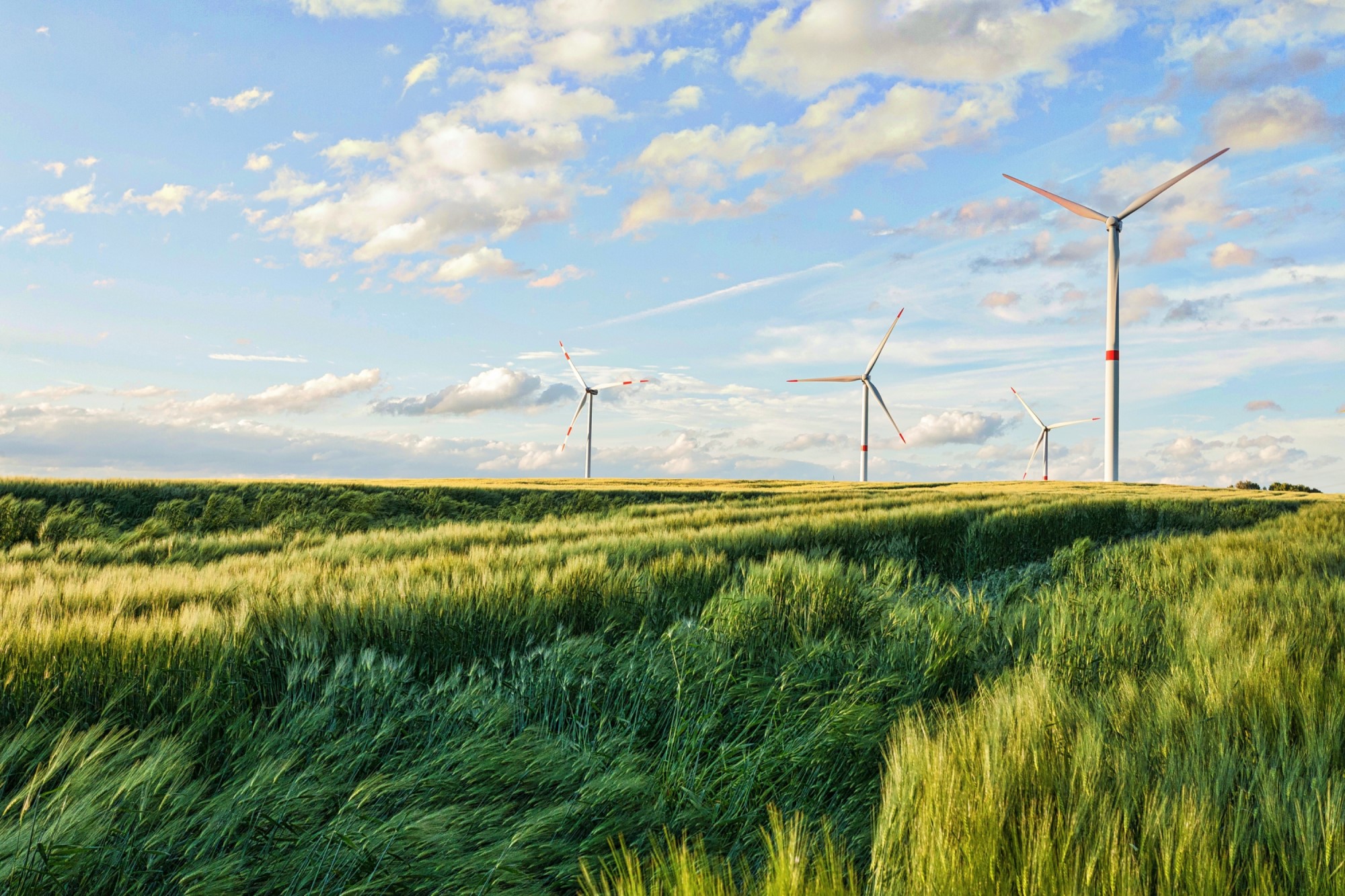Exploring DP World’s Decarbonization Strategy
31 October 2023•
Supply chains are getting more complex and logistics networks are linking more economic centres across the globe.
With freight transport relying heavily on fossil fuels due to long distances which need to span across countries and continents, it is no surprise that freight transport is one of the largest contributors of emissions. Transport related CO2 emissions account for 16% of total global emissions each year, out of which trade related freight transport accounts for 40-45% (roughly 7-8% of global emissions).
To tackle the industry's growing emissions, key players in the industry, including DP World, have set out detailed decarbonization strategies to reduce their emissions to achieve net zero over the next few decades.
In addition to the IMO adopting a strategy to reduce total emissions from international shipping by at least 70% by 2040 (compared to 2008 levels), firms like CMA CGM, Hapag-Lloyd and Mediterranean Shipping Company have announced their commitment to become carbon neutral by 2050.
Moller-Maersk plans to achieve carbon zero by 2040 and DP World has committed to becoming net zero carbon by 2050. Its immediate target is a 28% reduction in carbon footprint by 2030.
Accordingly, DP World is focused on technology and nature based solutions, implementing sustainable business practices, and working with partners around the world to achieve their targets. The Group says that they are well on their way, and have already started to witness emissions reductions.
 Photo: Piotr Konopka - Group VP, Energy Programmes at DP World
Photo: Piotr Konopka - Group VP, Energy Programmes at DP World
Lucidity Insights sat down with Piotr Konopka, Group Vice President, Energy Programmes at DP World, to get an inside look at the company’s decarbonization strategy.
Deep Decarbonization
With Deep Decarbonization, DP World is working towards full electrification of equipment and 100% renewable electricity supply across its operations. Additionally, the Group has a fleet replacement plan for all trucks and ships to be converted to zero carbon fuels.
At COP27, DP World Chairman Mr. Sultan Ahmed Bin Sulayem announced that the Group had joined the Green Shipping Challenge. The approach can be grouped into 5 pillars:
 Infobyte: DPW's Five Pillars of Decarbonization
Infobyte: DPW's Five Pillars of Decarbonization

Infobyte: DP World Has Already Seen a 4-5% Reduction Between 2021 and 2022

Infobyte: CO2 Emissions by Mode of Transportation (Gigatonnes)

Infobyte: DP World's Commitment to Become Carbon Neutral by 2050
Piotr shared how DP World's decarbonization activities were broken down into three operational divisions: Marine Services, Ports and Terminals, and Logistics & Economic Zones.
The Marine Services division consists of 4 businesses including P&O Ferries, Unifeeder, P&O Maritime Logistics and P&O Ferrymasters. Drydocks World, which was a part of Marine Services until June 2023, is now its own division within the Group's corporate structure.
Some of the key initiatives at the business units include
P&O Ferries
-
P&O Ferries has 15 ferries where majority owned
-
P&O Ferries has bought 2 new hybrid electric to use between the UK and EU, which is a short distance
-
The main challenge is to get electricity supply to charge the hybrid electric ferries
-
There is a 100% POTENTIAL to decarbonize
-
Time to decarbonize: Medium to long
-
Difficulty in decarbonizing: Medium
Unifeeder
-
Unifeeder works on an asset light/chartered model
-
For decarbonization, Unifeeder needs to work with partners to greenify the fleets and work on operational efficiencies
-
In the short term, focus is on efficiency, effective networks, and vessel modifications plus increased use of Biofuels (supplied by GoodFuels)
-
In the medium term, LNG will be used as transition fuel along with use of carbon neutral methanol and methane, as well as transition from conventional to dual fuel tonnage
-
In the long term, DP World expects ammonia to be the dominant fuel of the future
-
Time to decarbonize: Medium to long
-
Difficulty in decarbonizing: Medium
P&O
-
Majority of the customers of P&O are Oil & Gas customers
-
P&O Maritime Logistics operates vessels for clients
-
Decarbonization focus is on Scope 3 emissions
-
P&O mainly works on operational improvements and considers the use of sustainable fuels such as ammonia or methanol in the future
-
A major challenge is that vessels are quite diverse with different sizes, shapes and forms
-
Time to decarbonize: Medium to long
-
Difficulty in decarbonizing: Hard
Drydocks World
-
70% of carbon footprint for Drydocks World is electricity
-
Drydocks World accounts for a small share of total carbon footprint but easy to address
-
The electrification of equipment will also lead to further decarbonization
-
Time to decarbonize: Short
-
Difficulty in decarbonizing: Easy
Some notable activities which have already started impacting total emissions include:
|
Rotterdam (Netherland) |
First net zero carbon terminal at RWG terminal at Port of Rotterdam, achieved through equipment electrification, using biofuels and compensation for residual emissions. |
|
Antwerp (Belgium) |
Port in Antwerp runs on 100% green energy. |
|
Southampton (England) |
Has become the first in Britain to reduce emissions with biofuel. |
|
Jebel Ali (Dubai, UAE) |
Terminal 4 is fully electrified. |
|
Mangrove seedlings |
After providing access to the Mangrove Restoration Mapping tool, local teams have planted over 60,000 seedlings across Ecuador, the Philippines, Pakistan, Mozambique and the UAE. |
|
Peru |
Ordered a fleet of 20 electric terminal tractors. |
Biofuels until Electrification
The other two segments - Ports & Terminals and Logistics & Economic Zones - are largely focused on reducing diesel and electricity usage. Diesel usage will primarily be reduced by either replacing with alternative fuels such as biofuels, or electrification.
Currently 30% of diesel consumed by the group is being consumed by rubber-tyred gantry cranes (RTG), which are easy to electrify and economically will make sense since the electric RTG is similar in cost to a diesel-operated RTG.
Electrical terminal tractors are another equipment the group is looking into, though Piotr explains that, "the supply chain is currently poor with orders struggling to be fulfilled."
He continued, "There is a strong business case for them, even though electric terminal tractors are more than twice the price of diesel-operated ones today."
For the logistics & economic zones division, electricity supply will be the main focus for the decarbonization efforts, as it is relatively easy to procure clean electricity be it through solar, wind, or hydro. The Group is already using 60.7% of its electricity from renewables and this is set to go beyond 70% by 2030.

Piotr explains that renewable electricity is relatively easy to procure in European countries as well as in South America and Asia these days. The majority of grids in South America are linked to clean electricity sources since much of the continent is powered off of hydroelectric power.
In India, the state governments have been quite aggressive with their own renewable energy plans; so much so, that DP World has set a group-wide target of becoming net carbon zero by 2050, while their Indian unit has set itself a much more aggressive target to achieve the same by 2030.
Join the decarbonization journey with DP World — read the full report here.

%2Fuploads%2Fsustainable-intl-trade%2Fcover.jpg&w=3840&q=75)